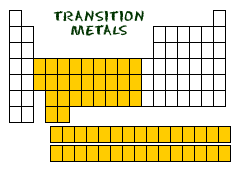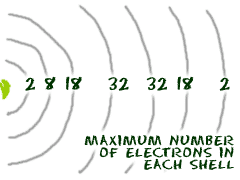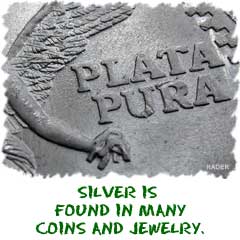 Let's start off by telling you that there are a lot of elements that are consideredtransition metals. Which metals are the transition metals?
Let's start off by telling you that there are a lot of elements that are consideredtransition metals. Which metals are the transition metals? 21 (Scandium) through 29 (Copper)
39 (Yttrium) through 47 (Silver)
57 (Lanthanum) through 79 (Gold)
89 (Actinium) and all higher numbers.
What Makes Them So Special?
It all has to do with their shells/orbitals. We like introducing students to the first eighteen elements, because they are easier to explain. Transition metals are good examples of advanced shell and orbital ideas. They have a lot of electrons and distribute them in different ways. You will usually find that transition metals are shiny, too. Not all of them, but we are sure you've seen pictures of silver (Ag), gold (Au), and platinum (Pt). Transition metals are able to put more than eight electrons in the shell that is one in from the outermost shell. Think about argon (Ar). It has 18 electrons set up in a 2-8-8 order. Scandium (Sc) is only 3 spots away with 21 electrons, but it has a configuration of 2-8-9-2. Wow! This is where it starts. This is the point in the periodic table where you can place more than 8 electrons in a shell. You need to remember that those electrons are added to the second-to-last shells.
Transition metals are able to put more than eight electrons in the shell that is one in from the outermost shell. Think about argon (Ar). It has 18 electrons set up in a 2-8-8 order. Scandium (Sc) is only 3 spots away with 21 electrons, but it has a configuration of 2-8-9-2. Wow! This is where it starts. This is the point in the periodic table where you can place more than 8 electrons in a shell. You need to remember that those electrons are added to the second-to-last shells. The transition metals are able to put up to 32 electrons in their second-to-last shell. Something like gold (Au), with an atomic number of 79, has an organization of 2-8-18-32-18-1. Of course, there are still some rules. No shell can have more than 32 electrons. You will find it's usually 2, 8, 18 or 32 for the maximum number of electrons in an orbital.
One More Thing
 Most elements can only use electrons from their outer orbital to bond with other elements. Transition metals can use the two outermost shells/orbitals to bondwith other elements. It's a chemical trait that allows them to bond with many elements in a variety of shapes. Why can they do that? As you learn more, you will discover that most transition elements actually have two shells that are not happy. Whenever you have a shell that is not happy, the electrons want to bond with other elements. Example: Molybdenum (Mo), with 42 electrons. The configuration is 2-8-18-13-1. The shells with 13 and 1 are not happy. Those two orbitals can use the electrons to bond with other atoms.
Most elements can only use electrons from their outer orbital to bond with other elements. Transition metals can use the two outermost shells/orbitals to bondwith other elements. It's a chemical trait that allows them to bond with many elements in a variety of shapes. Why can they do that? As you learn more, you will discover that most transition elements actually have two shells that are not happy. Whenever you have a shell that is not happy, the electrons want to bond with other elements. Example: Molybdenum (Mo), with 42 electrons. The configuration is 2-8-18-13-1. The shells with 13 and 1 are not happy. Those two orbitals can use the electrons to bond with other atoms. 







0 comments:
Post a Comment